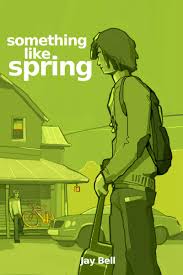Discovery is in need of more data to pinpoint the origin of the Burn, and there's one place they can get it: Ni'Var, the planet once known as Vulcan and now home to a unified Romulan and Vulcan people. But Ni'Var withdrew from the Federation a century ago in a cloud of distrust that remains to this day. The only play to secure their help is a Vulcan rite invoked by Michael Burnham, in which she will be represented by a surprising advocate.
With a title like "Unification III," the Star Trek: Discovery writers were making it clear that they were following up on the Next Generation two-part episode that featured Spock. Only in reflecting on this episode afterward did I really appreciate how bold a move this was; those episodes are older today than all of Star Trek was at the time they were made. Tethering a story so fully to other (sorry folks, but:) old Star Trek is a risk. But I thought the episode did an excellent job of filling you in on information a new audience would need to know, without making anyone feel like they were watching the end of a trilogy they'd never started (or sitting through an extended re-cap of information they already knew).
A key example of their clever approach came in the name planet name itself: Ni'Var. Poking around after the episode, I myself learned this word first came from a Star Trek fanzine, where it was said to mean "two-form." Fans recirculated that idea enough that in a later short story collection, an introduction written by Leonard Nimoy himself referenced the word. Star Trek: Enterprise name-dropped it just for fun. And now, Discovery is perfectly appropriating the concept to flesh out its tale, without worrying whether a viewer understands the choice or not. It's texture, not text.
Plenty more great texture fed the episode to various degrees, much of it picking up on intriguing Romulan concepts introduced in Star Trek: Picard -- the Qowat Milat and their ideals of "absolute candor" and defense of "lost causes." Actually playing footage of Nimoy himself from Unification II was the most overt connection, and a very nice touch. (Plus, I appreciate the restraint in not drafting actor Ethan Peck to deliver some kind of recorded message from Spock to Michael.)
The writers were also clever in the ways they expanded on and challenged Vulcan and Romulan lore. "The needs of the many outweigh the needs of the few" is about the closest thing to a Commandment in Star Trek, but the Vulcan president undermining that concept here made a great deal of sense: in the context of government, if "the few" are always the same people, repeatedly, how is that not oppression and injustice? This new trial of T'kal-in-tet (a chance to indulge in Star Trek's rich "legal episode" heritage) had an authentically Vulcan spin. Star Trek has always shown us that Vulcans believe themselves to be better logicians than they actually are; the idea that an ad hominem attack would be go-to practice in such a proceeding rings true.
So yeah, a lot about this episode felt smart and reverent, and I liked it very much. But there were also elements that didn't really work for me. Burnham's crisis of identity, built up in such a big way so far this season, seemed too easily resolved and addressed here. And while maybe I can believe that a meaningful interaction receiving "tough love" from her mother would do that, I don't really think it makes sense for Gabrielle Burnham to be there in the first place.
Michael is extended some degree of Vulcan status in having been adopted by Sarek. What's Gabrielle's connection? How did she even wind up at Ni'Var, never mind being accepted there, never mind being accepted by the order of the Qowat Milat (who Star Trek: Picard showed to be pretty closed to interlopers)?
You kind of just had to go with it, acknowledging that it was the right thing for the drama even if the mechanics of the narrative didn't quite work. That includes in the B plot, where Saru invited (not ordered) Tilly (of all people) to become his first officer (without any promotion in rank). You had to go with it. And you are rewarded by this show for "going with it": Sonequa Martin-Green and guest star Sonja Sohn were great together in every mother-daughter scene. This change for Tilly will allow her character to be used in interesting new ways.
Still, I'm sad for some opportunities this episode did miss. It seems criminal to give Georgiou the week off, not to have any kind of interaction between Burnham's birth mother and the other major mother figure in her life. And how do they not beam down to Ni'Var -- not even an indoor set there? I know the budget needed recovery time after all the great location filming and impressive sets so far this season, but they pick the moment Star Trek goes back to Vulcan as the moment to pinch pennies?



















